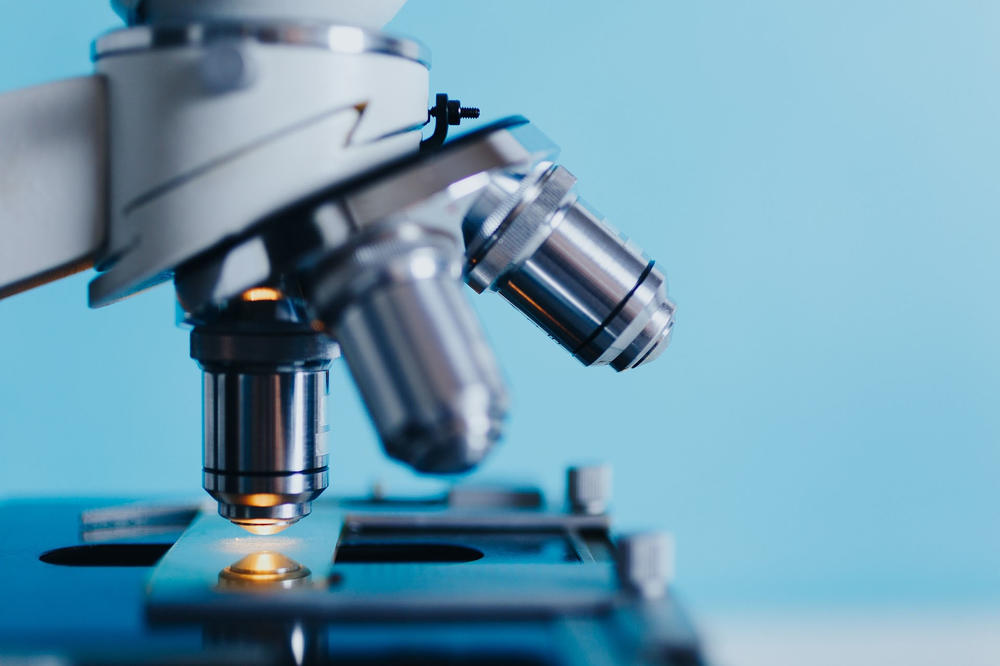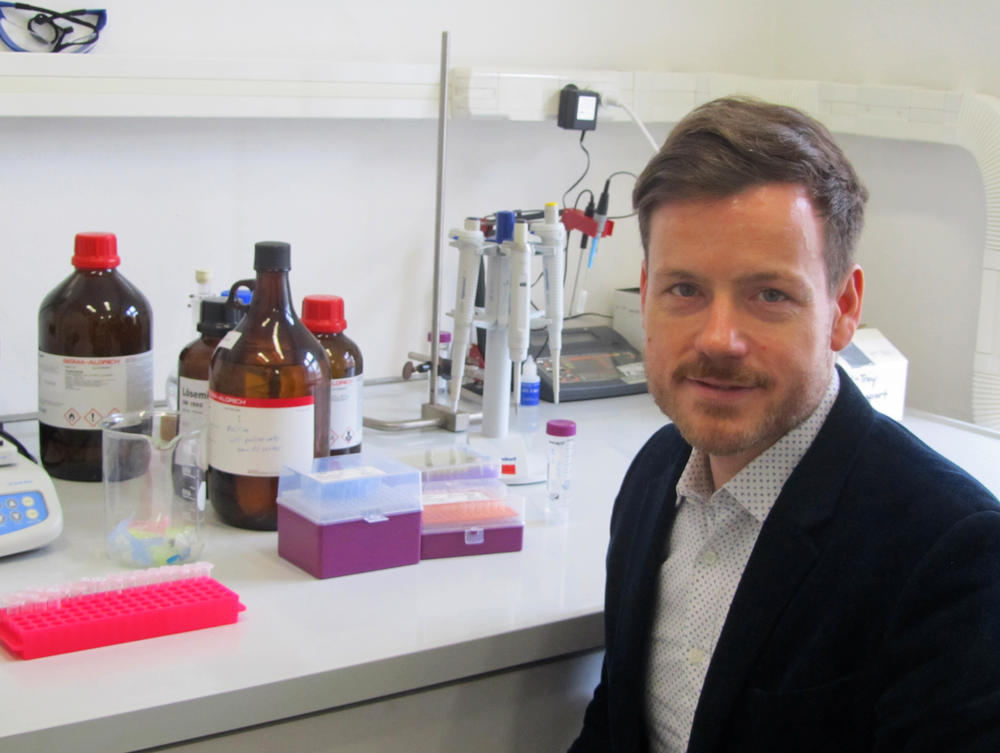Between the Cells
Scientists from the fields of medicine, chemistry, and physics are working together to detect inflammations at the molecular level at a very early stage
Nov 27, 2019
Detecting diseases at a very early stage: the investigation of the extracellular matrix should make this possible.
Image Credit: Pixabay License
Long before a disease manifests itself in body tissue, changes are already apparent in the extracellular matrix, i.e., in the space between the somatic cells. It is not the structure of the tissue itself that changes, but the fine structure of long sugar chains – so-called glycosaminoglycans – that are bound in a large number to large matrix proteins such as proteoglycans. As early as at the start of an inflammation, enzymes transfer more sulfate groups to these sugar chains. But even with the most modern imaging techniques, these early signs of disease are unfortunately not recognizable at this stage.
That could change in a few years: The Collaborative Research Center “Matrix in Vision,” which has been funded by the Deutsche Forschungsgemeinschaft (German Research Foundation, DFG) since 2018, aims to “visualize the characteristic changes in the biochemical composition and mechanical properties of the extracellular matrix (ECM) using imaging techniques.” “We use molecular imaging probes such as MRI contrast agents,” explains Professor Matthias Taupitz, a radiologist at Charité – Universitätsmedizin Berlin and deputy spokesperson for the Collaborative Research Center. In addition to Charité and the three major Berlin universities, the Max Planck Institute of Colloids and Interfaces (Potsdam-Golm), the German Federal Institute for Materials Research and Testing (Bundesanstalt für Materialforschung und –prüfung, BAM) and the National Metrology Institute of Germany (Physikalisch-technische Bundesanstalt, PTB) are also involved in CRC projects.
“The extracellular matrix is, besides the cells, an important component of all body tissues. With its functional properties, it plays an important role in the control of growth, disease defense, and healing and also determines the mechanical and elastic characteristics of the tissues,” explains Taupitz. Biomedical research in recent years has shown that many diseases, including inflammatory processes and tumors, as well as degeneration and regeneration, are associated with characteristic changes in the extracellular matrix at an early stage.
Professor Kevin Pagel from the Institute of Chemistry and Biochemistry at Freie Universität Berlin
Image Credit: Catarina Pietschmann
The concrete starting point for this extensive research project is the observation that contrast agents for magnetic resonance imaging, which are based on the element gadolinium or iron oxide nanoparticles, bind themselves particularly to the macromolecules mentioned. A key role is played by these long-chain glycosaminoglycans, which protrude from the protein backbone of the macromolecules like loose threads. “These sugar chains are negatively charged by increasing sulphation. And this is where the positively charged metal ions and nanoparticles accumulate, which increases the contrast in the MRI,” says Professor Kevin Pagel, a chemist at Freie Universität Berlin and subproject head at the CRC. However, so far scientists do not yet understand in full how the metallic particles bind.
“Normally, methods developed in chemistry and physics take 30 years to reach the patient. Here we are doing it completely differently.” Kevin Pagel
The unusual thing about Collaborative Research Center 1340 is the combination of the latest analytical techniques, some of which will only be conceived in the course of the project, with medical research. “Normally, methods developed in chemistry and physics take 30 years to reach the patient. Here we are doing it completely differently,” says Kevin Pagel. And so the researchers are approaching the topic from two sides in parallel in a total of 17 subprojects: A-projects are based on physicochemical methods, while B-projects deal with medical issues such as inflammation and fibrosis of the liver, arteriosclerosis, aortic aneurisms, inflammatory intestinal diseases, or tumor development. “A- and B-projects will then be brought together in order to develop techniques with which we can map the clinical questions,” says the chemist.
Kevin Pagel’s research is exemplary for this concerted work. In a research project, he hopes to decipher the structure of glucosaminoglycans and their ability to bind to the metal components of contrast agents.
“On the one hand, we want to use gas phase methods to find out exactly which motifs are bound there. We mainly use synthetic sugars as well as purified sugars from tissue samples, incubate them with the corresponding metal ions, spray them into the mass spectrometer, and look at where exactly these metal ions stick to the sugar molecules.” Pagel is confident that the scientists will be able to understand the binding behavior of the contrast agent within two years. It will be much more difficult to determine the exact sequence of glycosaminoglycans, which also include the natural anticoagulant heparin and the strongly water-binding hyaluronic acid. Glycosaminoglycans consist of about 100 sugar molecules, mostly composed of 50 disaccharide units.
“At the moment, the technology to find out the exact sequence of the sugars in the chains and their sulphation is still lacking,” explains Kevin Pagel. “We are currently separating them in an ion mobility mass spectrometer or irradiating them with light, causing them to disintegrate into larger fragments, which we will then investigate further. These methods are still new for sugar analysis. We are now further developing them because they have the potential to unravel the sulphation patterns.”
“The work in the Collaborative Research Center is intended to identify new approaches for improved, preferably early, non-invasive imaging diagnostics as well as for therapy monitoring.” Matthias Taupitz
In the medium term, the techniques developed in Pagel’s project will be used in a second CRC project to analyze biological samples from B-projects (biopsies, tissue sections) for glycosaminoglycan patterns. The objective is to filter out characteristics that specifically indicate the onset of tumor development or inflammation.
Basic research such as laboratory diagnostics will benefit greatly from this research – but above all, it will benefit the patients. “In addition to new scientific findings on the role of the extracellular matrix in the development and course of diseases, including during therapy, the work in the Collaborative Research Center is intended to show new approaches for improved, preferably early, non-invasive imaging diagnostics and therapy control,” says Matthias Taupitz.


